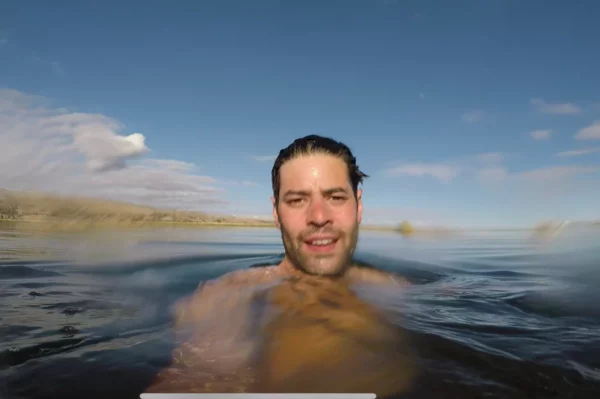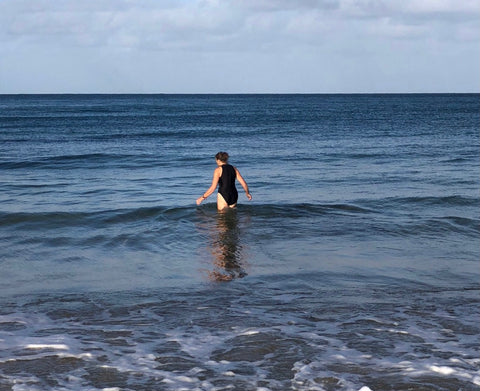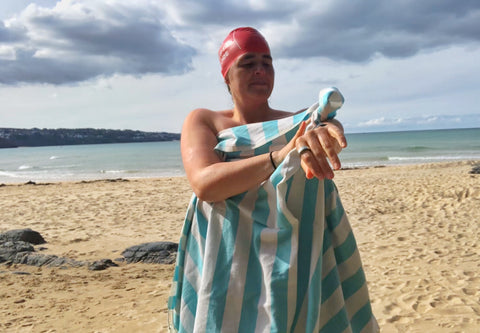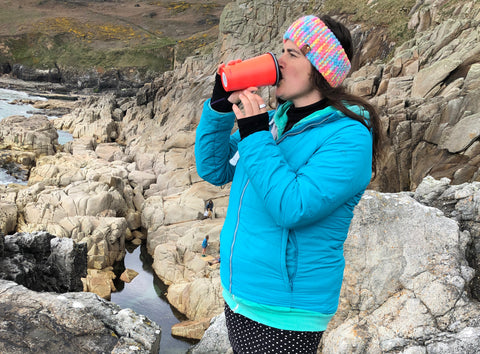Beginners’ guide to wild swimming

Thinking about dipping your toes into the world of wild swimming but don’t know how to start? We often get asked about how you can get into wild swimming if you are new to it. So, we have put together this handy little guide with all the points you should consider when taking the plunge into the open water safely.
This is part 2 of the guide, we would recommend you check out Beginner’s Guide to Wild Swimming Part 1 here before reading on.
1. Don’t be afraid to be THAT friend to ask is this safe or is there another way
Safety is key when going wild swimming and if you feel it isn’t safe, do not hesitate to raise your concerns to those you are going with. If it is not safe to go in, then don’t, there will always be another time and place for a swim.
As mentioned in Part One of our guide, if you are new to wild water swimming, it might be a good idea to head to an open water swimming venue or a beach where there are lifeguards on duty.
2. Make sure you are warm before you go in
Have warm layers on and walk around so your core temperature is a good level before you go in. It is not a good idea to get into the cold water if you are already feeling cold! So have a brisk walk around before starting to strip off your clothes.
3. Get in gradually

Do not be tempted to dive in straight away!
Get in gradually and slowly, inch by inch. It is not a competition to see who can get in the quickest.
Splash your face, arms and back of the neck with water as you go in, so your body starts to acclimatise and builds up to being in the cold water.
Steady your breathing, think slow, long breaths and don’t start swimming until you feel your breath is under control.
4. Time yourself
We mentioned this in Part One of the guide, under the swim kit list but wanted to mention it again, we really recommend wearing some kind of watch or fitness tracker where you can time yourself. Do not be tempted to stay in too long to begin with, start small, even under a minute is absolutely fine when starting out. It is best to start off small and build up.
Know your limits and stay well within them. Do not be influenced by other people’s durations, everyone is different and every day is different. Again, it is not a competition. Your body can tolerate the cold water differently on different days, lots can influence it for example, how much sleep you’ve had, how stressed you are, where you are in your menstrual cycle and your mental health.
5. Stay in your depth
Stay well within your depth, make sure you can touch the bottom. Can you tread water?
Our old family rule is walk to out and swim back in. Until you are confident enough to swim in deeper water, it is best to stay within your depth.
6. Getting out

When you get out of the water, get out of your wet things as soon as possible, get dry and layer up with warm clothes.
Top tip – before we go in for a swim, we make sure all our clothes are around the right way (not inside out) and we organise them so that they are in the right order to get changed back into them. It is hard enough trying to get changed when you are cold and your fingers don’t work, let alone having to rummage around in your bag trying to find your underwear!
It is tempting to stand around in your towel chatting with fellow swimmers, but trust us, the quicker you get into your warm, dry clothes the better. There is plenty of time once you are fully dressed and wrapped up to have a drink and a natter.
Everyone has their own post swim routine but below is ours:
- Put on a changing robe – they are great as they will protect you from the wind chill when getting dressed and allow you to get dressed underneath them.
- Grab our towel and start drying our face, neck, arms and torso. We roll down our swimsuit to the waist.
- Put on our underwear and clothes on the top half – then our coats.
- Put on gloves, scarf and hat.
- We often keep our swim hat on until we are fully dressed – you can even put on a warm hat on top of it.
- Then take wet swimsuit off the bottom half and dry and put on bottom layers, putting on socks and shoes too.
7. Warming up

Warming up post swim needs to be done gradually.
Here are a few ways to warm up gradually:
- Hot drink: it is a good idea to have a hot drink post swim to sip on. Some favourites of ours include spicy hot chocolate, herbal tea and coffee.
- Eat something: it is a good idea to have something to eat after your swim, especially having something sweet as your blood sugar levels can drop when you come out. Eating will also help your body to warm up.
- Walk around: walking around to warm up will get your blood pumping round your body and help your body to increase its body temperature.
There are a few no no’s when it comes to post swim warming up. It is best to avoid the following:
- Don’t jump in to the car with the heater on: if you do your blood will be pulled to the heating skin and away from your organs which is where it’s needed.
- Don’t shower or have a bath as soon as you get home: your body is working hard to keep your core warm and keeping you alive, if you jump in a hot shower or bath your blood will be diverted to your skin and can make your overall body temperature drop, making you feel faint.
8. Keep an eye on your swim buddies
Keeping an eye on your swim buddies and vice versa is so incredibly important, we often check in with each other as we are getting changed, asking “are you OK?”.
Signs to look out for are:
- Trouble getting changed or not doing anything at all
- Not communicating
- Vacant look on their face
- Lips turning blue
9. Do not drive straight away
You should wait until you have warmed up before jumping in the car and driving. The cold water can affect your cognitive function, so it is best to only drive once you feel you have warmed up and feel alert.
Important note – whilst every effort has been made to advise on the risks associated with wild swimming, please do so at your own risk. The Wild Swim Store or lowimpact.org will not be held legally or financially responsible for any accident, injury or loss as a result of this guide to wild swimming.






